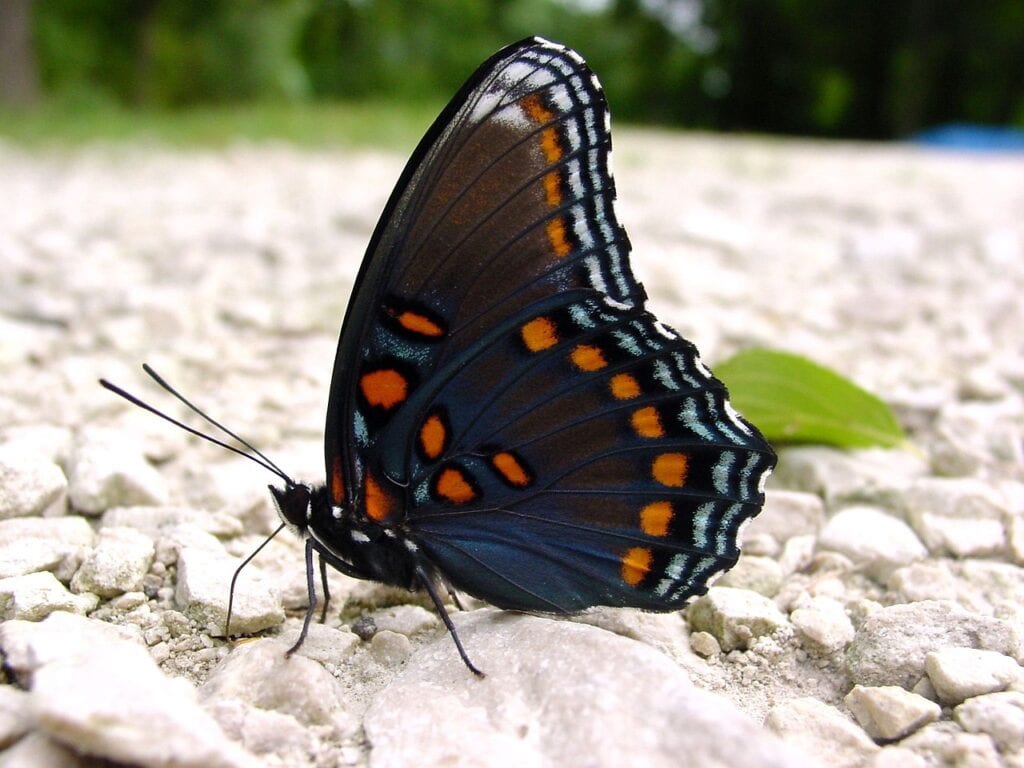10 Incredible & Unique Butterfly Facts: Anatomy & Patterns
-
Ed Malaker
- Last updated:

Butterflies are amazing creatures that look beautiful and help pollinate flowers. However, many species are facing declining numbers because of climate change and the heavy use of pesticides. If these helpful insects interest you, keep reading as we provide a list of incredible and unique butterfly facts to help you understand these creatures better.
The 10 Butterfly Facts
1. Butterfly Wings Move in a Figure-Eight Pattern

A butterfly has four wings with two forewings and two hindwings that it uses to fly. The wings move in a figure-eight pattern as it moves through the air, allowing for better maneuverability than many other flying insects.
2. Butterfly Wings Have Thousands of Tiny Scales
A butterfly wing has thousands of tiny chitlin scales and hairs across its surface. These scales and hairs are responsible for the colors that you see when you look at the wing from a distance.
3. Butterflies Have a Different Pattern on the Front and Back of Their Wings

Most butterfly species will have different patterns on their front and back wings. The front wings also contain the androconia, which are scent scales that the males use to attract females.
4. There Are 17,500 Butterfly Species
You can find butterflies in many colors and sizes, and scientists have currently identified more than 17,500 species. Experts believe that the butterfly evolved from the moth 190 million years ago.
5. There Are Five Butterfly Families
Hesperiidae
The Hesperiidae family contains the skipper butterflies, which usually have a stocky moth-like body.
Lycaenidae
Lycaenidae is a large family of butterflies that contains more than 6,000 species. These butterflies are the gossamer-winged butterflies that are often large and colorful.
Nymphalidae
Nymphalidae is the largest family of butterflies, with more than 6,000 species. Nymphalidae are usually medium-sized butterflies that hold their wings flat when they rest.

Papilionidae
Papilionidae is a superfamily containing all butterflies except the Hedyloidea, which are American moth-butterflies.
Pieridae
Pieridae is a family of butterflies that contains about 1,100 species, mostly from tropical areas in Africa and Asia.

Riodinidae
Riodinidae is a family of metalmark butterflies that often have small metallic-looking spots on their wings. They are usually small or medium-sized and can resemble butterflies of other families.
6. Lepidopterophobia Is the Fear of Butterflies or Moths
Lepidopterophobia can affect people in different ways, with some people suffering extreme symptoms that can interfere with their daily lives. Other people have milder symptoms with a reaction similar to what you might expect when someone encounters a spider or earwig. As much as 10% of the population experiences some form of lepidopterophobia.
7. The Monarch Only Lives 2 to 6 Weeks

The important monarch butterfly only lives 2–6 weeks in captivity, and experts believe that it has a similar lifespan in the wild. However, if predators or disease don’t kill them first, migrating monarchs can have a lifespan that often stretches from August until April.
8. The Female Monarch Butterfly Lays Her Eggs One at a Time
The female Monarch butterfly has to lay her eggs one at a time, but she can lay more than 100 in a single day, with some reports stating that she can lay more than 200 in a single day.
9. Many Butterfly Wing Scales Bend Light to Produce Color

While the scales on some butterflies contain pigment, like our skin and hair, that produces the color that you see on the wings, others use structural color, which is when complex microscopic shapes bend the light, like a prism, creating the color that we see. Most butterflies with blue wings use this technique.
10. All Butterflies Have 11 Main Parts
Forewings
The forewings of a butterfly contain the scent glands that the male needs to find and attract a mate.

Hindwings
The hindwings are not essential for normal flight, but the butterfly will use them to increase maneuverability when pursued by a predator.
Antennae
The antennae on a butterfly use chemoreception to detect the presence of food. The antennae can detect odor, taste, wind direction, wind speed, temperature, and humidity, giving the butterfly a good sense of its environment.
Head
Butterflies have a spherical head, and it’s where you will find the eyes and mouth.

Thorax
The thorax is the butterfly’s body and consists of three fused segments. The thorax is where you will find the legs and where the wings attach to the body.
Abdomen
The last few sections of the body comprise the abdomen, which contains the butterfly genitals and reproductive organs.
Compound Eye
A compound eye is a large eye that detects light and images. A butterfly compound eye has many ommatidia, which are small lenses that work together, almost like a disco ball, to enable the butterfly to see in virtually any direction.

Proboscis
The proboscis is the collection of mouth parts of the butterfly that curl up when not in use. It’s almost like a long tongue, but it works more like a straw — or more accurately, two straws next to each other — and helps the butterfly stay hydrated.
Forelegs
The forelegs are the front legs of a butterfly.
Midlegs
The midlegs are behind the forelegs and like the other legs, have chemical receptors that help the butterfly find food.

Hindlegs
The hind legs are behind the midlegs. The thorax controls these legs, and the butterfly primarily uses them for walking.
Summary
There are so many interesting facts about the butterfly. Its compound eye has more lenses than those of many other insects, and it creates color, including the rare blue color, by using microscopic shapes to bend light, instead of using pigment like many other animals. The many species are separated into five larger families, and many only have a short lifespan once they become adult butterflies.
Featured Image Credit: Paul Sparks, Shutterstock
Contents
